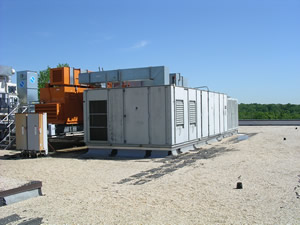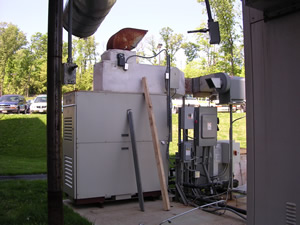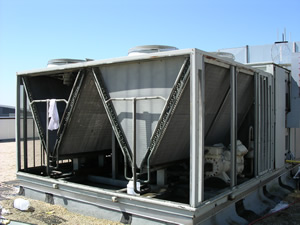A Report from Energy Ant — My Trip to a Research Facility at the University of Maryland’s College Park Campus
I went to the University of Maryland. No, I'm not a college student. I got a tour. That’s what I do, I take tours. Today’s tour is of research facilities at the University of Maryland campus at College Park, Maryland. Here they have two combined heat and power (CHP) generators which they use to do research with different kinds of systems. The equipment is very expensive ($70 million), but the University does not have to buy it. Companies donated this equipment for the University to use in to do their research.

The University of Maryland runs two different types of systems on the same building. One supplies the cooling for zone one of the building and the other supplies cooling for zone two. You may ask why they would put both of the systems on the same building. One of the reasons is that these are experimental systems. Information on how well they work is collected, studied and sent to industry, businesses, and other researchers. Having the systems on the same building makes it easy to compare them because they have the same insulation, same building materials, same everything.
The first system they are testing has a natural gas powered air conditioner(pictured right). The cool air from the air conditioner is pumped into the building. A lot of hot air comes from the air conditioner too. Usually, this hot air would be released into the air outside. In this system, the hot air is sent to a liquid desiccant system. Say that ten times fast! This machine with a big name, takes the hot air released by the air conditioner and uses it to dry out air that’s on its way to the building. See, if you have drier air, you don’t need to cool the building as much as if the air is wet. The desiccant system also uses the energy that was released from the air conditioner in the form of hot air. By using as much of this energy as possible, the building gets more air conditioning for its money.

Now on to system two! First up, a micro turbine (pictured left). Micro means small. So this is basically a small turbine (spinning blade) that sits outside a building and provides power to just that building, or only a few buildings. This micro turbine generates some of the electricity for the building. In doing so, it puts out a very hot exhaust. Six hundred degrees to be exact. That exhaust is sent to an absorption chiller which chills cools water that is sent to the building. There is still heat and energy left though, so the exhaust from the absorption chiller (which is still 225 degrees) is sent to a solid desiccant system (pictured lower right).This machine basically does the same thing the other desiccant system does, drying the air that is pumped into the building.

How cool is all that? These machines are rearranged and switched every once in a while. If something isn’t working right, or if newer, better technologies come along, machines can sometimes be upgraded. Students have a control center where they can monitor everything.
I learned a lot about doing research with different kinds of technology.


